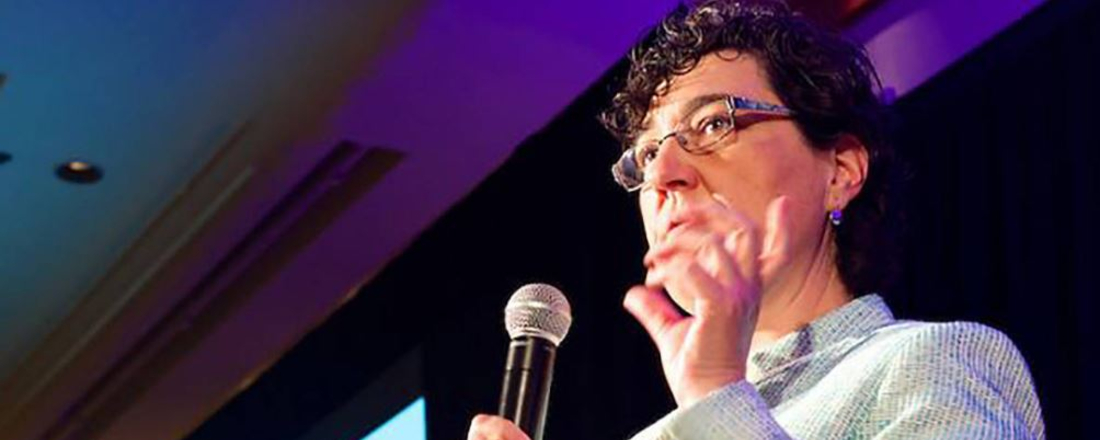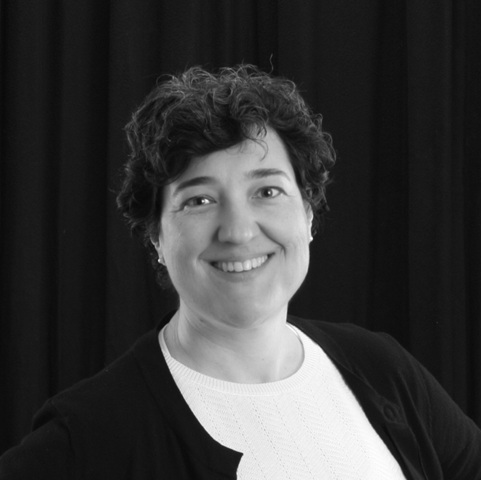
In the News
Tracing Health program director Marta Induni Comments on New COVID-19 Restrictions in California
-
Focus Areas
Communicable Disease Prevention -
Programs
Tracing Health -
Strategic Initiatives
COVID-19

California Introduces Regional Stay-At-Home Order Based On ICU Capacity
With COVID-19 cases and hospitalizations passing the peaks set this summer, California introduced a new regional stay-at-home-order based on intensive care capacity to try and slow the spread moving into the winter holidays.
The new public health order, released Thursday, affects regions of California that have less than 15% of ICU capacity remaining. None of the five regions designated by the state currently meet that criteria, but some are expected to as early as this week.
“The bottom line is if we don’t act now, our hospital system will be overwhelmed,” Gov. Gavin Newsom said.
The new order comes as more than 8,500 Californians are hospitalized with COVID-19, more than any other time in the pandemic. At least 2,000 of those are in intensive care units.
Marta Induni, senior director of research for Public Health Institute, an Oakland-based nonprofit focused on health equity, said focusing the new order on ICU capacity made sense.

Sheltering in place, it’s always been ‘we don’t want to overwhelm our health care system. We see that we are approaching overwhelming our healthcare system, so triggering it when we get to less than 15% of ICU capacity, I think that makes a lot of sense.Dr. Marta Induni, Tracing Health program at PHI
Newsom hinted at the new orders on Monday, when state officials shared projections showing many parts of the state could be weeks away from COVID-19 cases overwhelming ICU capacity at hospitals. More than 99% of California residents were already under a 10 p.m. to 5 a.m. curfew order Newsom introduced Nov. 19.
Read the full story and listen to the audio from Capital Public Radio.
Here’s What To Know About California’s New Regional Stay-At-Home Order
California announced on Thursday a new regional stay-at-home order based on capacity at hospital intensive care units. While no regions currently meet the criteria to trigger the order, Gov. Gavin Newsom said some could fall under the restrictions in the coming days or weeks.
With more Californians currently hospitalized for coronavirus than at any other time during the pandemic, Newsom said the new orders were designed to try and slow the spread of COVID-19 and limit the load on health care workers.
The order cannot stop the spread of COVID-19, but it can help slow the spread of the virus.
Marta Induni, the senior director of research for Public Health Institute, an Oakland-based nonprofit focused on health equity, said “curtailing access to public spaces is going to be very helpful to curtailing COVID-19.”
“Earlier in the year in March and April, adherence to the home guidelines was really essential in keeping the spread of the virus down,” Induni said of California’s first stay-at-home order.
According to a review by the Centers for Disease Control and Prevention of state and U.S. territory stay-at-home orders in March, those that initially implemented restrictions at the start of the pandemic mitigated the spread of the virus.
Read the full story from Capital Public Radio.
Health Experts: California’s Stay-At-Home Order Is Right Move, But Pandemic ‘Heading Into A Really Bad Place’
Large areas of California could be placed under stay-at-home orders as soon as next week. This comes after Gov. Gavin Newsom announced a plan Thursday that calls on regions to shut down business sectors based on the capacity of their hospitals’ intensive care units.
Experts say these measures are necessary to stem the spread of the virus, especially as hospitals throughout the state report an influx of COVID-19 patients.
CapRadio asked Erin Mordecai, biologist at Stanford University; John Swartzberg, epidemiologist at UC Berkeley; and Marta Induni, senior director of research at the Public Health Institute their thoughts on the new rules:
Will this work as well as it did in the spring?
Erin Mordecai: The question here is how much people will comply with this new stay at home order? It is a self enforced order. Of course certain businesses are going to be closed, so that’s going to limit what people can do But the other thing that’s going to determine its success is how much people abide by these guidelines of not gathering together and especially not in indoor spaces.
John Swartzberg: The question in my mind is not whether or not these measures being instituted will work, the question is how well they work, and whether we need even more aggressive measures … one of the things that’s really difficult about it right now, beyond the fact that there are so many cases, is the fact that everybody’s emotionally exhausted. In the spring, people thought ‘this will be over in a few weeks we’ve just got to hunker down.’ We certainly realize right now that that’s not the case.
Marta Induni: Earlier in the year in March and April, adherence to the home guidelines was really essential in keeping the spread of the virus down. We’ve heard of people having ‘shelter fatigue’. But it’s really important to [shelter]. I hope people are seeing the scope of this pandemic, it’s really getting closer and closer to us personally as those numbers escalate.
On the economic impact
Swartzberg: These are people’s livelihood, it’s what provides shelter for you and puts food on your table. Still, we’re at a point now where we’re in such a dangerous circumstance where if we don’t do something much more draconian, we’re going to be in a position where we won’t have hospital beds for our patients.
Induni: We’re going to be seeing not only a surge in illness and a surge in hospital capacity, but we’re also going to be seeing a surge in people with economic distress, absolutely that’s going to get worse.
On the rules
Mordecai: As we all know, kids are less good at social distancing and often less good at wearing masks than adults are. I was encouraged to see that the order still states that schools can remain open if they’re already open, as well as child care centers, I think that’s really important for children. I do think it would be nice if playgrounds that are outdoors could stay open as well with some limited capacity restrictions. So that one was a little confusing to me, as well as the restriction on overnight camping.
On messaging
Induni: We have to act in a culturally appropriate manner. There are resources for people, we do have sick leave policies that should protect workers. We know our most vulnerable people are those that are probably less likely to have safe employment conditions, people who work side by side or are not encouraged to do the basics with masks and such. We really need to step up our messaging with those communities.
On what’s to come
Swartzberg: We’re heading into a really bad place right now, and we haven’t even seen the full effects of people traveling over Thanksgiving. We’re not going to see that for another week or 10 days. … December really is going to be a bad month, it’s going to be much worse than it is now, and January is probably going to be the same, and I think we’re going to get some respite probably toward the end of February.
Mordecai: One of the ways that we can start to exit from stay-at-home orders if they do come into effect is if we can have broader access to testing, not just if you have symptoms or if you know you’ve been exposed, but even access to surveillance testing … that would be really helpful I think in allowing us to relax the stay-at-home orders.
Originally published by Capital Public Radio
More Updates
Work With Us
You change the world. We do the rest. Explore fiscal sponsorship at PHI.
Support Us
Together, we can accelerate our response to public health’s most critical issues.
Find Employment
Begin your career at the Public Health Institute.



